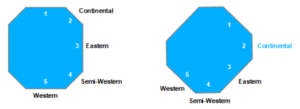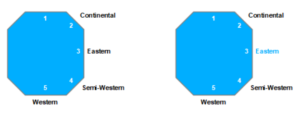Learn tennis drop-shot
In 5 steps to the perfect tennis drop-shot ball as a beginner
In 5 steps to the perfect tennis drop-shot ball as a beginner
The drop-shot is another stroke in the repertoire of every advanced tennis player. Many tennis beginners literally stick their strokes on the baseline, so a drop-shot is particularly well suited to break the opponent’s rhythm.
At the same time, the drop-shot offers a little element of surprise, so the drop-shot should be incorporated into tennis training. Tennis beginners learn the drop-shot similar to the lob mostly after the first security in the strokes serve, forehand, backhand, volley and smash has been built up. The drop-shot is played on the forehand as well as on the backhand side with slice.
Below we explain to tennis beginners the 5 steps to the perfect tennis drop-shot: from the grip, the backswing, the movement and the outswing to drop-shot tips.
1. Tennis drop-shot grip
The grip position is the basis for a successful drop shot in tennis. Ideally, the drop shot bounces just behind the net and not high at all. Therefore, a slice – stroke with backspin – is the best option:
a) Drop shot on the forehand side
On the forehand side, the slice drop shot is played in a continental grip. The tennis racket is slightly bent forward in the lateral position at the bottom.

b) Drop shot on the backhand side
On the backhand side, the slice drop shot is played in the Eastern grip. The tennis racket is slightly bent forward in the lateral position at the bottom.

2. Tennis drop-shot backswing
You are in the middle of the court and your opponent is unusually far behind the baseline. Therefore you decide to play a drop shot instead of a normal forehand or backhand. On both sides the drop shot is played one-handed.
As soon as the opponent hits the tennis ball, you decide whether to play forehand or backhand. You turn sideways accordingly and bring the tennis racket out in a circle – as with a normal forehand or backhand topspin – so that your opponent assumes a normal baseline stroke.
3. Tennis drop-shot movement
Now you prepare the moment of surprise by going for the slice. You hit the tennis ball in full arm extension with an “undercut” – to create the backspin – and at the same time go clearly forward through the ball. To do this, you shift your weight from back to front and also hit the tennis ball in front of your body.
4. Tennis drop-shot outswing
The drop shot is swung through to the front after the point of impact. Then, as always, return to the center of the court and prepare for the next stroke.
Note that the backswing, the motion and the outswing are one fluid motion.
5. Typical tennis drop-shot mistakes and tips
Finally, three typical mistakes and tips to improve your drop shots:
a) Change your grip as late as possible
Many tennis beginners feel that their opponent can smell the drop shot a kilometer away. Therefore, take the racket out normally and change your grip only at the last moment, so that the opponent is really surprised by the drop shot.
b) Advance to the net after a promising drop shot
A well-placed drop shot makes the opponent sprint forward. Since the tennis ball ideally does not bounce very high anymore, the opponent usually has only a limited number of hitting opportunities. Therefore, by advancing, you put yourself in the ideal position to cover the court and easily win the point, for example, with a volley of your own.
c) Lure baseline players to the net
In tennis, the match is often won by disrupting your opponent’s game. If your opponent is a solid baseline player but feels uncomfortable at the net, you can play the drop shot as a tactical variation. In this case, the opponent is lured forward with a drop shot, even if it is not perfect, and then has to finish the point in the unfamiliar position at the net. Here your chances of winning a point increase.

